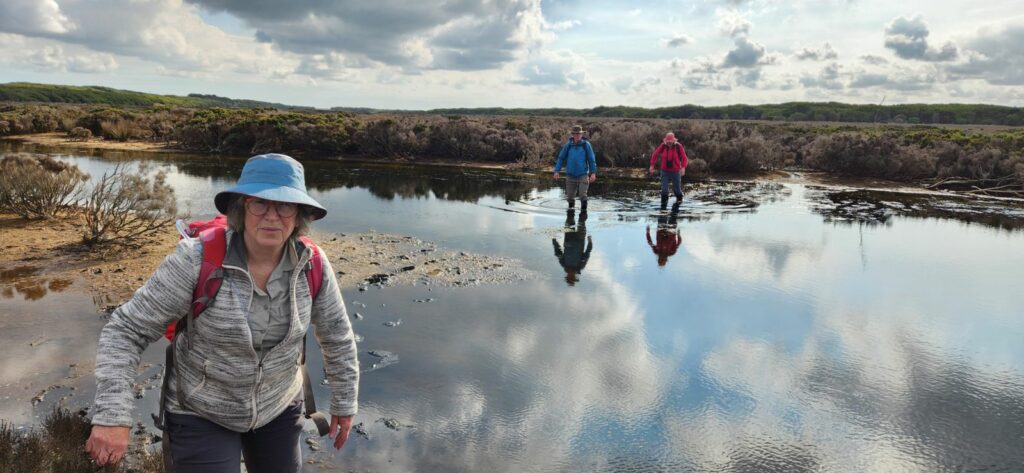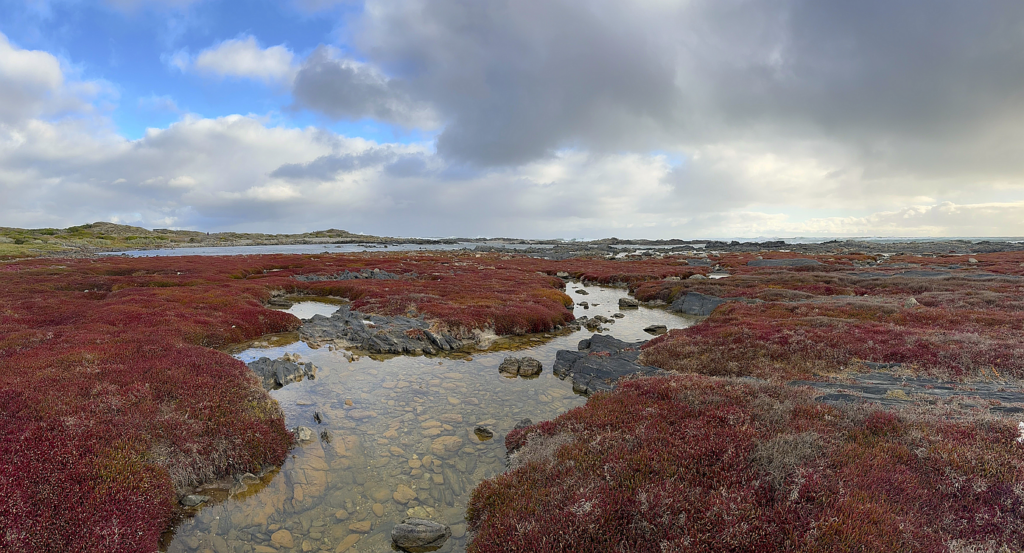Friends of the OBP search for Orange bellied parrots on King Island
With the support of a grant from the Tasmanian Nature Conservation Fund (Orange bellied parrot cause) between April 25th and May 1st, eleven members of the Friends of the Orange-bellied Parrot Wildcare group, aided by several other keen birders, participated in the great search for the elusive orange-bellied parrot (OBP) on King Island, under the expert leadership of Marianne Gee and Mark Holdsworth. The hope was that evidence would be found of OBPs stopping at King Island on their northward migration.
These searches involved:
– Hours of driving around the island in old utes gawking at the introduced American turkeys, pheasants, peacocks and peahens, and California quail that are abundant in the cattle pastures, to say nothing of the smaller introduced species such as starling, blackbirds, sparrows, European goldfinches and others
– Wading through creeks and marshes at Sea Elephant River (Marianne nearly left her feet behind in the mud at the edge of the creek)
– Opening and closing countless gates into pastures and figuring out how to slither through electric fences
– Stepping around countless piles of cow manure (are there no dung beetles on King Island?)
– Watching for the snakes that are abundant on King Island, with at least two nearly trodden on
– Stopping at countless high points to use the receiver to scan the frequency of the OBPs that left Melaleuca equipped with tracking transmitters (Marianne was extremely dedicated to this cause)
– A day of carrying out general bird surveys at identified sites as part of the annual ‘Wings on King’ bird surveys (plus identifying other birds seen during OBP searches (Heidi and Erin got to about 95 species over the week!)
– Lighter moments such as having a coffee at the Cape Wickham Golf Club, crowned Australia’s best a week previously, and enjoying multiple lovely picnic spots.
It was unfortunate that after searching high and low throughout the island (though there isn’t much high on King Island) no evidence of OBPs was found, not even beeps from the radio receiver. However, the week was very useful for identifying locations on the island where OBPs might stop on migration because their food plants are available. Some of these were known, but the list has been refined for future surveys.
The Sea Elephant River and Yellow Rock River marshes are promising, as are many places around the island’s beautiful rocky coasts. Peerless Point seemed to have the most patches of good feeding habitat, and was a stunningly beautiful place.
King Island is experiencing its worst drought in decades, which was sad to see. In addition to poor conditions due to this drought, habitat that used to be good for OBPs around the edge of Lake Flannigan was found to be so trampled by cattle that it will likely be useless for OBPs for some time to come. In addition, other habitat at the southern end of the island has been badly affected by the expansion of the mine there. Such ongoing habitat degradation doesn’t bode well for this already critically endangered species.






